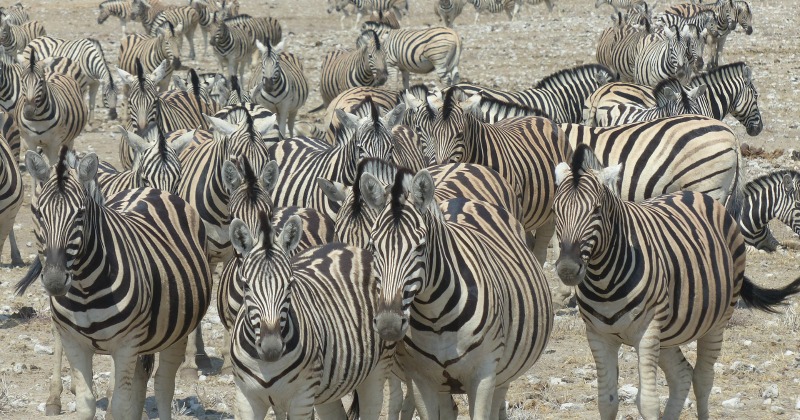Uncovering the Mysterious Beauty of Africa's Iconic Striped Creatures
The Marvelous World of Zebras
Enter the fascinating world of zebras, where dazzling stripes join untamed beauty
What is the allure of zebras? Understanding the fascination and unique characteristics of zebras
The social structure and behavior of zebras
The ecological significance of zebras in their habitat
Captivating zebra photography from the wild
Understanding zebra stripes: Evolutionary significance and theories
What color is a zebra?
Are zebras white with black stripes or black with white stripes?
Why are zebras striped? Are they a necessary defense mechanism or merely decorative?
What exactly is their color? Are they black or white? Why do they have those stripes? Where do they live?
Let's look at a few answers to the many questions about these African animals.
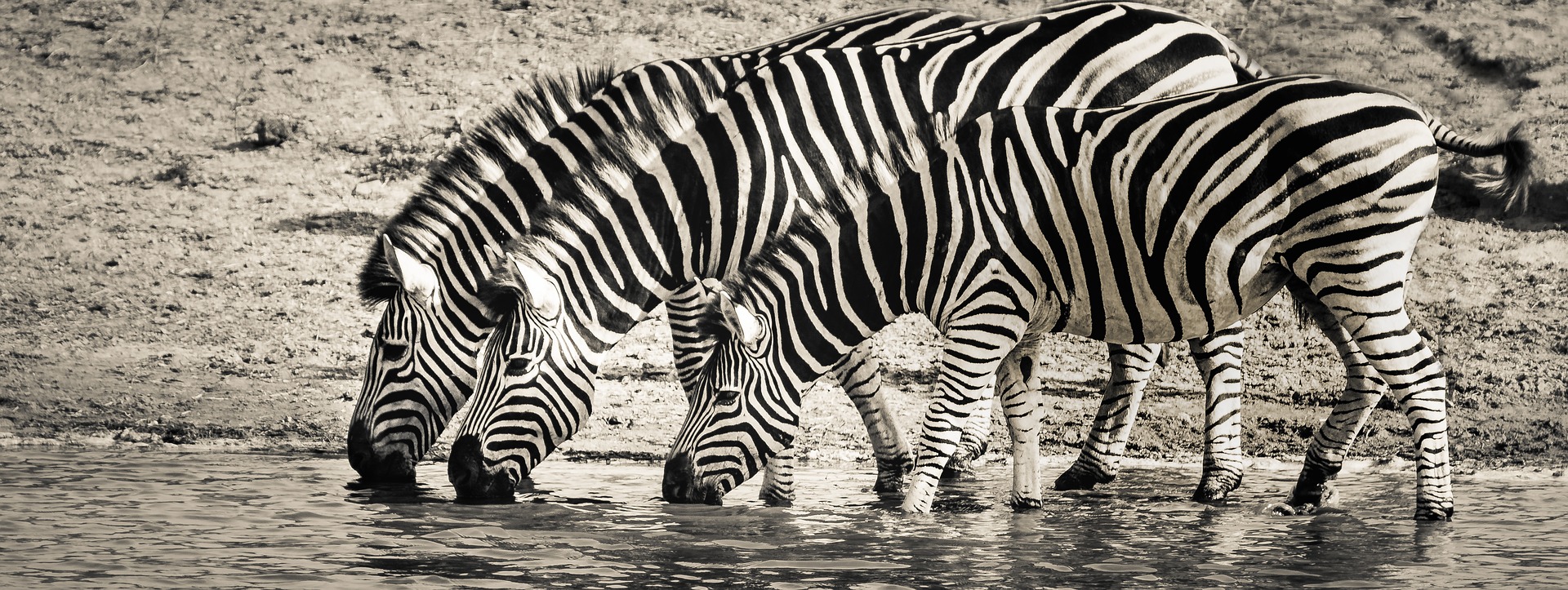 What color is a zebra?
What color is a zebra?So, let's start with the most frequently asked question about zebras:
So why do zebras have stripes?
Nobody knows for sure why these African animals have stripes.
The purpose of the stripes has stimulated a good deal of discussion amongst wildlife enthusiasts.
Theories about Zebra stripes usually fall into a few broad categories.
Disrupting predatory attack, reducing thermal load, having a social function, or avoiding a parasite attack.
The theories that have received most credibility have focused on a possible motion dazzle confusion effect and the one that tsetse flies and other biting flies are less likely to land on black and white striped than on uniform surfaces.
The stripes could act as camouflage.
Predators without color vision find it difficult to isolate when they are bunched up in groups.
This theory is supported by the fact that you will very seldom spot lone zebras by themselves.
Lions, spotted hyenas, wild dogs, cheetahs, and leopards successfully hunt them. This means that if If there is a camouflage effect or a distortion of perspective, it cannot be very effective.
The problem with these theories is that their behavior does not fit what would be expected from a camouflaged animal.
Firstly, they prefer an open habitat with short grass, making them conspicuous.
In addition to this, these African animals are quite noisy and active, and they do not freeze in response to danger.
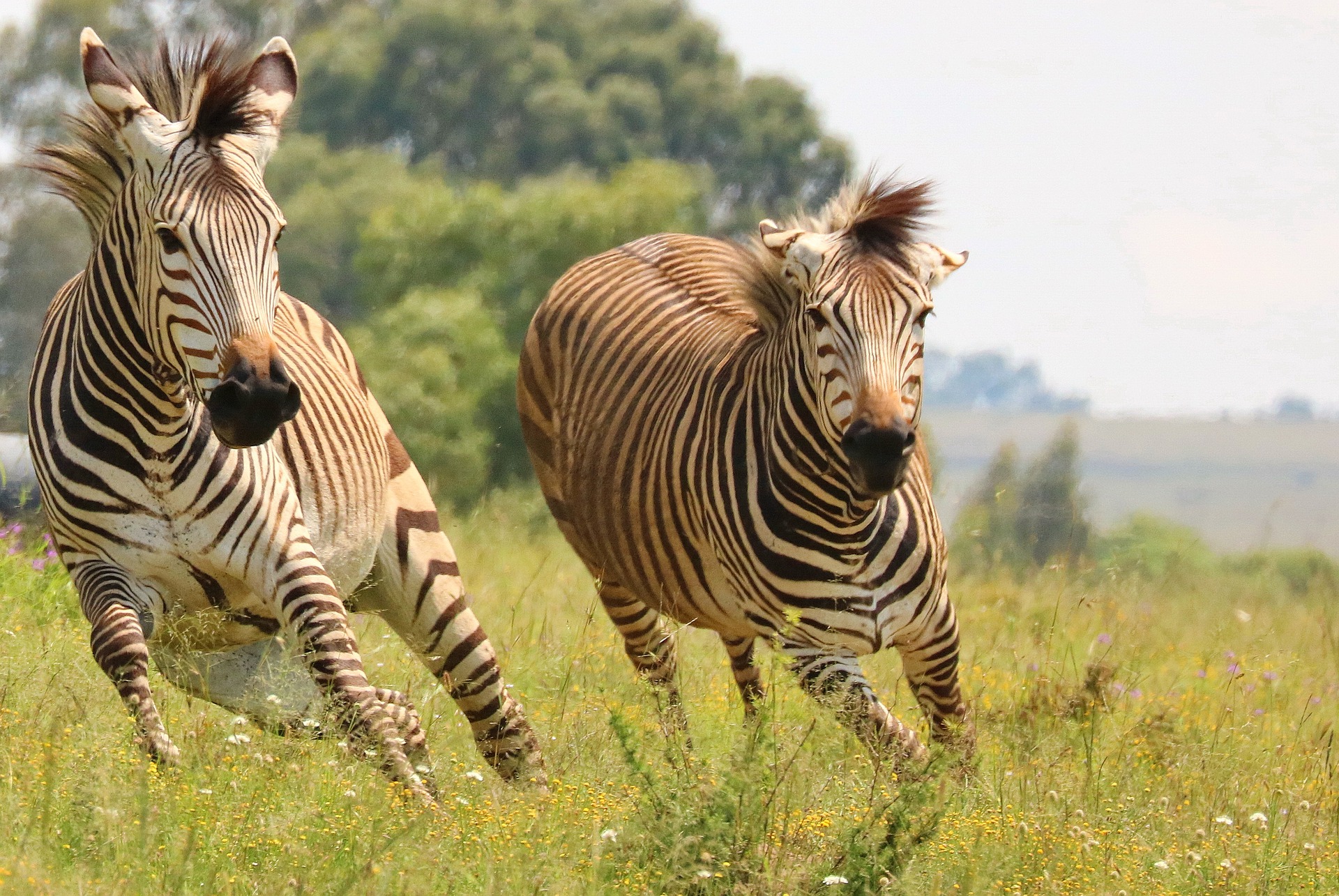
An important pointer to the function of their stripes is their effect not on predators but other zebras.
It has been suggested that the stripes serve as visual cues and identification of each other.
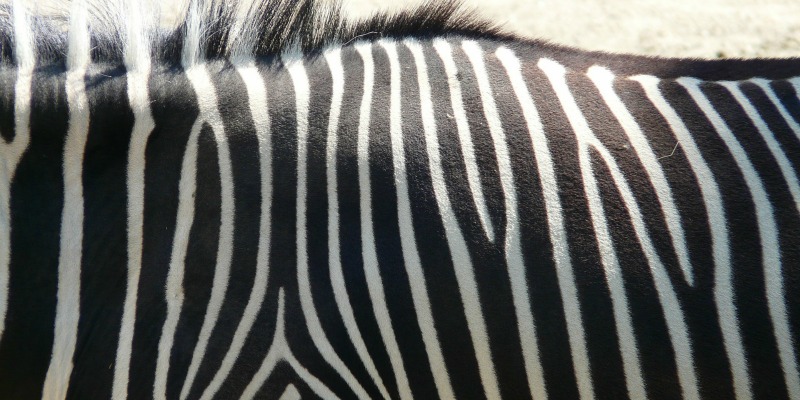 Zebras can recognize each other by their stripes
Zebras can recognize each other by their stripesWith each striping pattern unique to everyone, they can recognize one another by their stripes.
Interestingly, they have some fascination with stripes.
There are accounts that even black and white stripes painted on a flat surface will attract them in groups.
Another common question about zebras are:
Are zebras a type of horse?
Zebras are sometimes called striped horses but they are not from the same species.
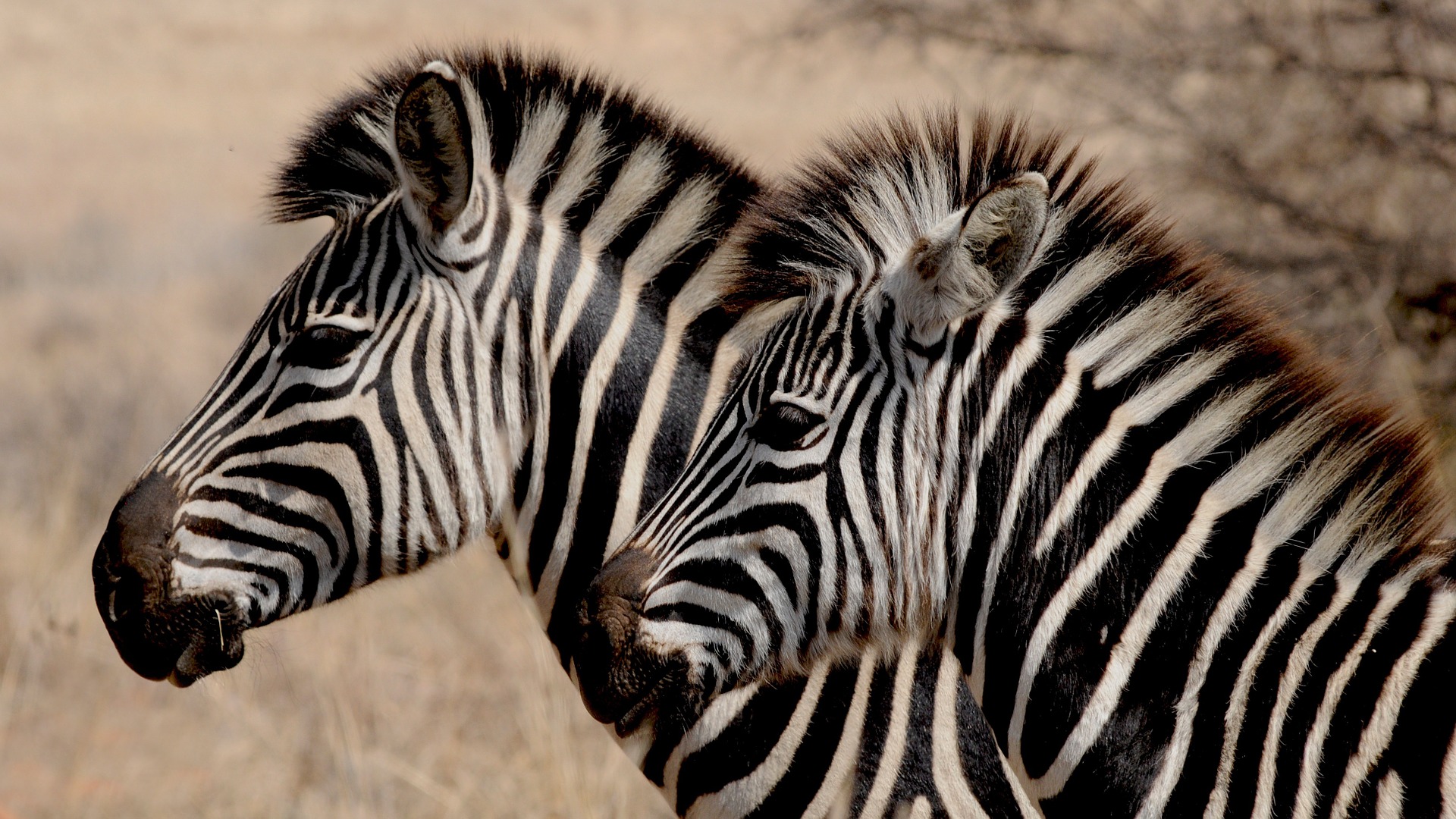
They are both from the Equidae family and they are ungulates.
So if they are closely related to horses the next question is:
Can you ride a zebra?
Many years ago, at the start of the 20th century, there were a few early settlers who attempted to domesticate these African animals, but it was never successful.
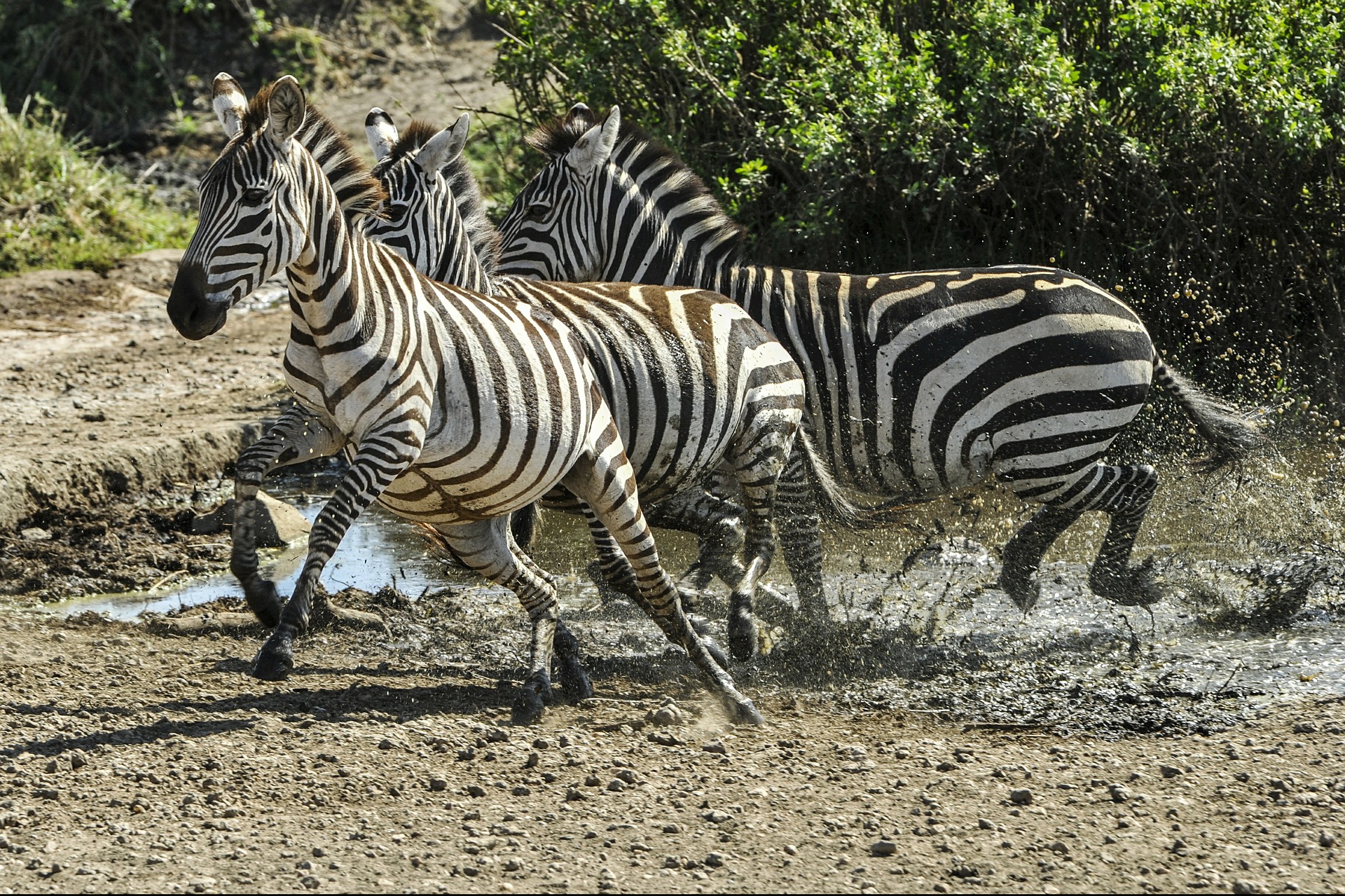 Zebras are not easily tamed and quite aggressive when cornered
Zebras are not easily tamed and quite aggressive when corneredThese wild animals were not easily tamed and were often quite aggressive when cornered.
It was also found that they have much weaker backs than horses and struggle to deal with heavy loads.
What habitat do they prefer?
The Burchell's zebra prefer open woodland, scrub, and grassland.
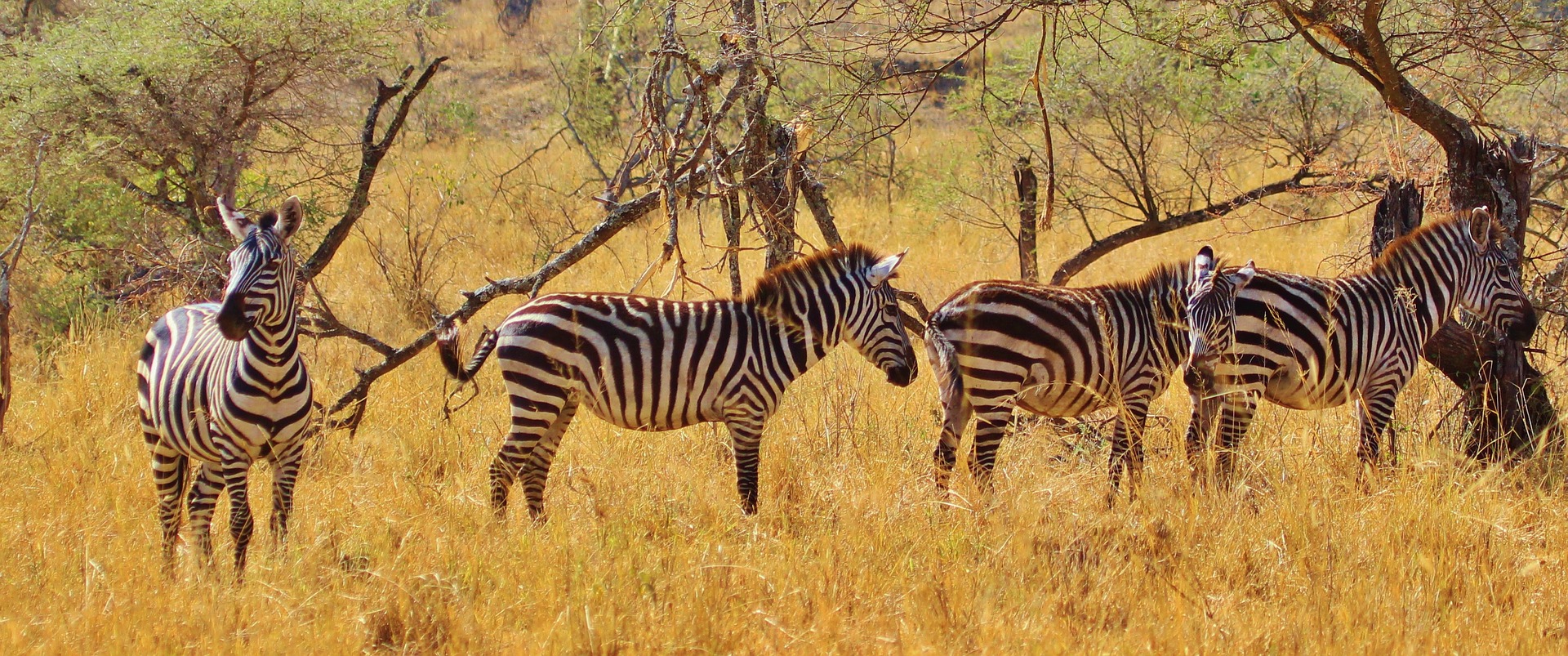
They are very dependent on water, and you will seldom see them more than 12 km from it.
The Cape Mountain species prefers the mountainous areas of the Eastern and Western Cape in Southern Africa.
Why do Zebras live in groups?
These African animals have a society that is based on small family groups of harems and bachelor herds.
Stallions will fight viciously for control of the females.
A dominant stallion controls a herd of up to six mares and their foals.
The stallion's active shepherding of unattached females forms these herds.
The stallion heads the hierarchy, herding his harem with his head held low, and his ears laid back.
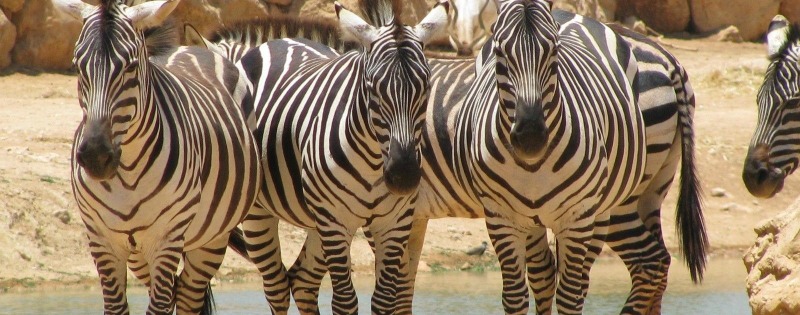
Groups are bonded by mutual grooming of the head, neck, and shoulders by gently nibbling one another.
When herd stallions meet, they approach within a few meters of each other.
They will stand with their heads up and then slowly approach with their heads down and ears cocked.
As they meet, they will sniff nose-to-nose, rub their cheeks together, sniff each other's genitals and rub their heads on the partner's rump.
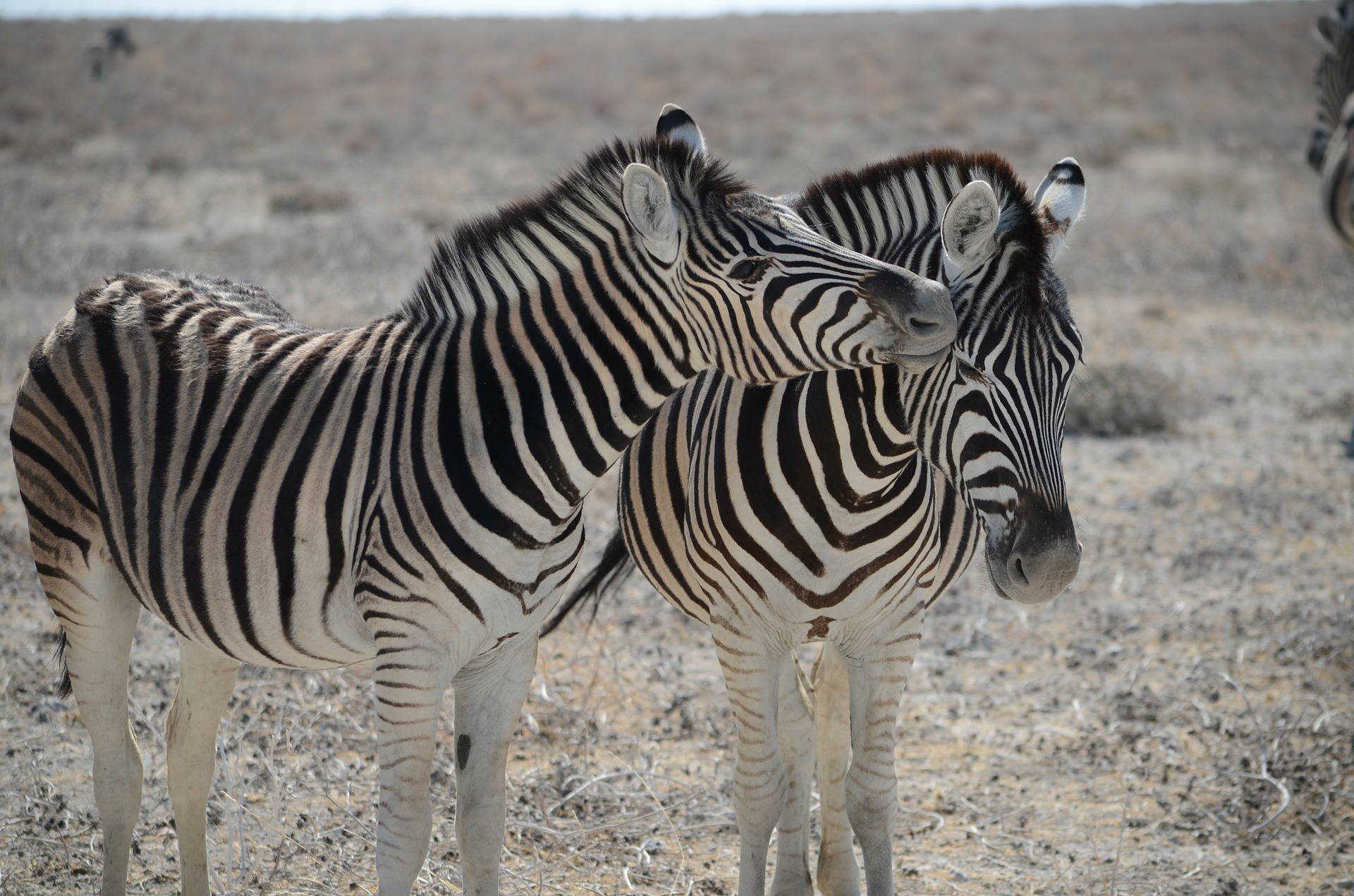
Males
that do not hold breeding herds join up into bachelor herds.
Bachelor males either live alone or with groups of other bachelors until they are old enough to challenge a breeding stallion.
Young stallions can take over an established herd by defeating its controlling male.
This, however, will require him to enter a violent contest of kicking and biting.
Stallions are unable to breed until they have gained control of a herd.
Why is there a dominance hierarchy amongst the zebra mares?
There is a strict pecking order among the herd’s mares.
This is established by fighting and maintained by threat gestures.
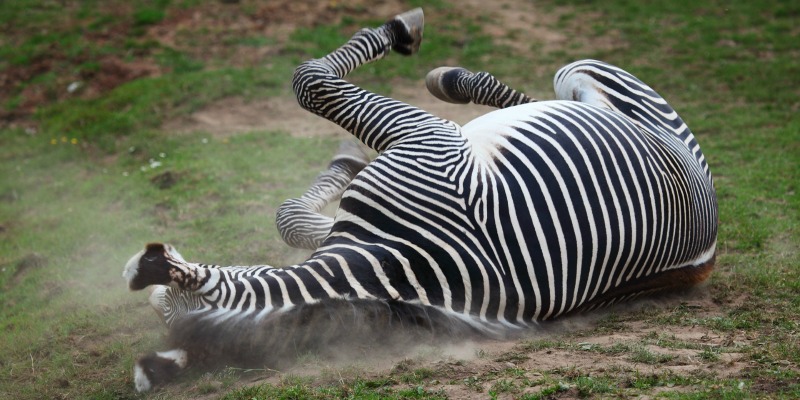 High-ranking zebra mares get priority access to dust baths
High-ranking zebra mares get priority access to dust bathsThe privileges of being a high-ranking mare is that they get priority of access to dust baths, shade, and other limited resources.
The most common threat is a quick approach with the-
- head held low,
- the ears laid
back,
- the teeth bared and the
- tail lashing.
Did you know - the zebra is an odd-toed ungulate?
They have hooves that feature an odd number of toes.
Like most ungulates, the eyes sit on the sides of its head.
This gives these African animals a wide field of view to be on their guard against predators.
Ungulate refers to any mammal with hooves.
A hoof is an enlarged toenail. These hoofed animals walk on tiptoe.
What enemies do zebras have?
These African animals have excellent eyesight.
Because they are ungulates their eyes sit on the sides of its head.
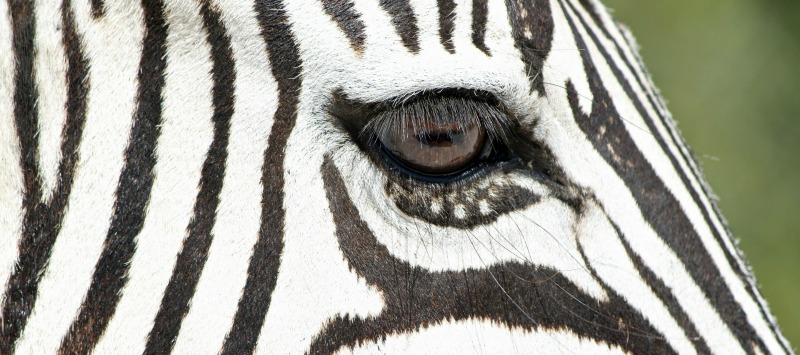 Zebras do not have color vision but their night sight is much better than ours
Zebras do not have color vision but their night sight is much better than oursLions and spotted hyenas are their most significant predators.
If attacked, the herd will flee together.
In groups, everyone has a smaller chance of falling prey.
The Stripe camouflage may also assist during the defense by confusing the predators and causing them to hesitate.
The mare with the youngest foal being runs first with the foals running alongside their mothers.
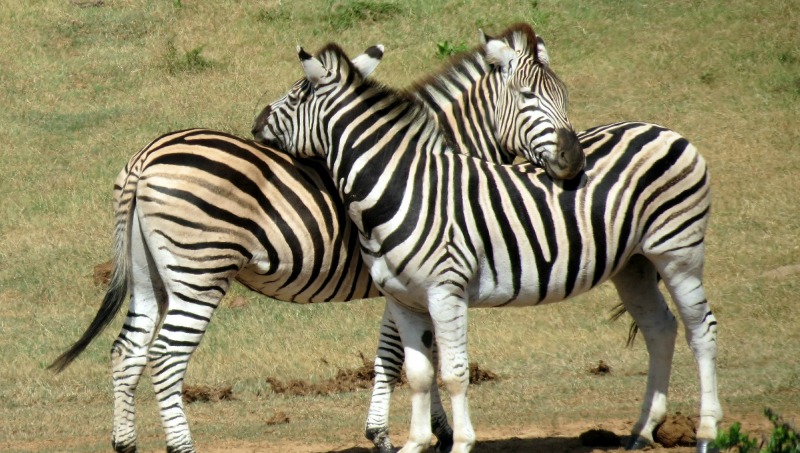 Zebra looking in opposite directions have evolved as a safety mechanism
Zebra looking in opposite directions have evolved as a safety mechanismThe main herd stallion may, on occasion, ward off the attackers with a defensive rearguard position.
From this position, it will kick and bite any predator that comes within range.
What predators prefer zebras in their diet?
In the Kruger National Park, they provide 16% of lion kills and in the Savuti 29%.
In the dry season of the Savuti, they provide 80% of spotted hyena kills.
What do zebras eat?
They prefer short, green grass but will also eat coarse tall forage.
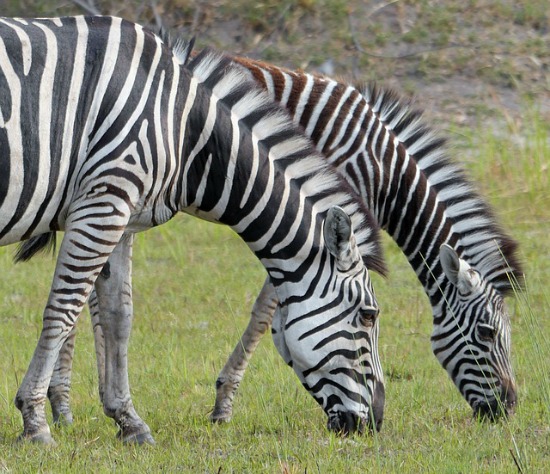 Zebra can maintain good body condition on poor forage
Zebra can maintain good body condition on poor forageThey are unselective grazers.
This is because their efficient digestive system allows them to live on diets of lower nutritional quality.
They feed on green grasses but will also eat-
- shrubs,
- herbs,
- leaves and
- tree bark.
When they feed you will notice that while some animals have their heads down grazing others will be standing up and looking around for predators.
How do zebras' breed?
A herd stallion checks the reproductive condition of his mares by sniffing their urine.
The Mares urinate more frequently as they come into heat and the male marks where they urinate.
This is done as a deterrent to competing suitors.
When a mare is on heat the mare presents to the stallion by standing with her hind legs splayed and her tail lifted to one side.
Mating takes only a few seconds and is repeated hourly for two days.
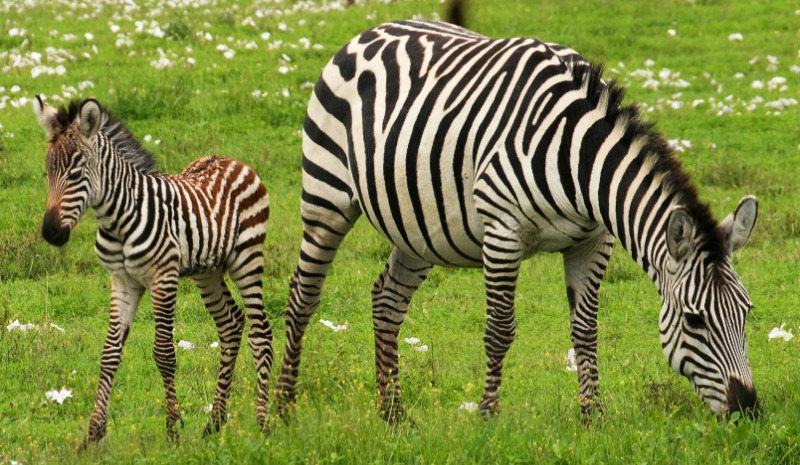 The mother recognizes her foal by smell for the first few days, and then by its stripe pattern later
The mother recognizes her foal by smell for the first few days, and then by its stripe pattern laterA mare with a newborn foal is extremely aggressive towards her herd companions.
A foal can run beside its mother within an hour of birth.
A mare is extremely possessive and protective towards her offspring and will spend a lot of time sniffing and licking them.
Each mare recognizes her foal by smell for the first few days, and then by sight by its stripe pattern.
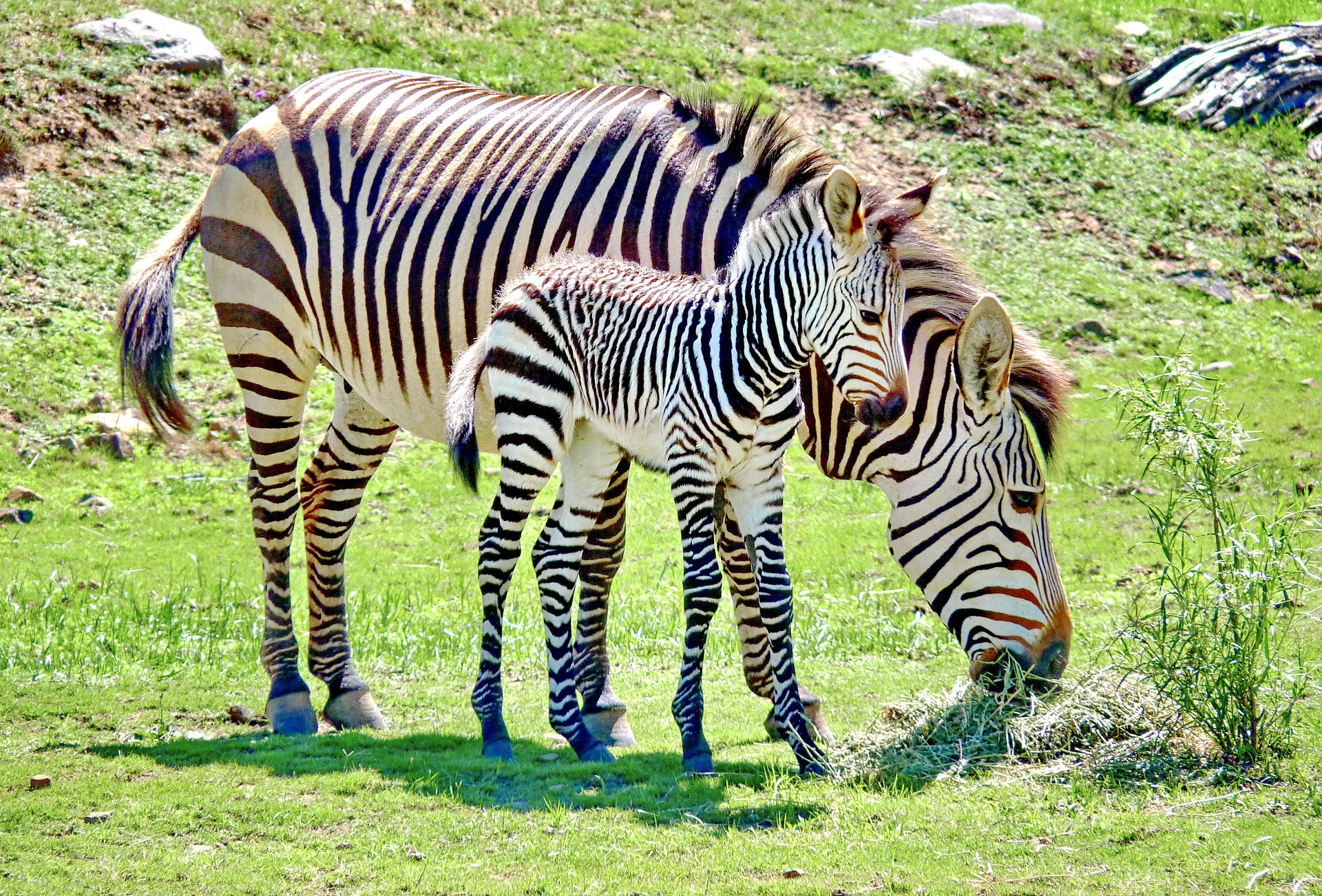
Foals eat grass after only three days, but it is 11 months before they are weaned.
Until they are about three and a half months old, foals eat portions of the adult's dung to pick up the bacteria; they need to digest their food.
Conclusion
We examined the intriguing qualities and habits that make zebras one of the most fascinating species on earth. Extraordinary adaptations have allowed them to thrive in a variety of environments.
By understanding the significance of their stripes and their amazing adaptability, this was a peek into one of the evolutionary and natural world wonders.
